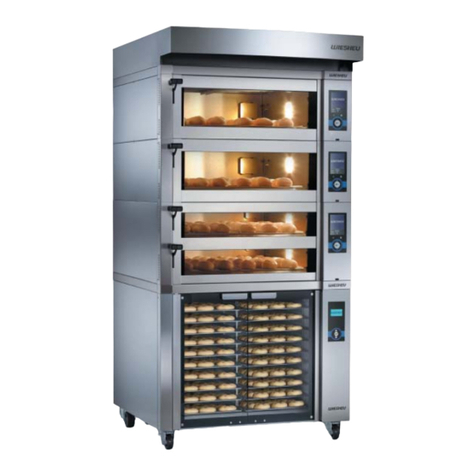
Page 9
CAUTION
2.6 Risks of burns
CAUTION
CAUTION
2.5 Risk of scalding
Caution, risk of scalding!
Heated liquids can cause scalding.
During unloading, hot liquids can leak over the edge of the baking trays.
■Prior to opening the door, always check that there is no water in the baking
chamber.
■If, in case of errors, there is water in the baking chamber, do not take the
oven into operation.
■Disconnect the device from the power supply.
■ To x and remedy the damage contact a WIESHEU service technician.
■ Do not insert containers with liquids or with cooking material which liquees
when heated, into the device.
■Do not prepare any products from which a liquid outlet of >100 ml per loading
operation can be expected.
■Do not open the door during the program process.
Hot steam can cause scalding.
Hot steam can escape at the rear of the device, through the exhaust air vent.
■Set up the device in a manner that no personal injury is caused by the es-
caping steam.
Despite safety technology hot steam and heat escape when the device door is
open.
■Step aside when you open the door.
■Ensure that no other people are in front of the dooropening.
■Open the door carefully.
Hot water can cause scalding. If the solenoid valve is defective or the steaming
valve permanently switched on, hot water can collect in the baking chamber.
■In this case, immediately shut off the on-site water supply.
■Further operation is prohibited.
Caution, risk of burns!
Risk of burning on hot surfaces. The frame, the glass of the machine, and the
surfaces of the baking chamber heat up and become hot.
■Wear heat resistant gloves.
■Open the door carefully.
■Prior to cleaning, let the device cool down.





























